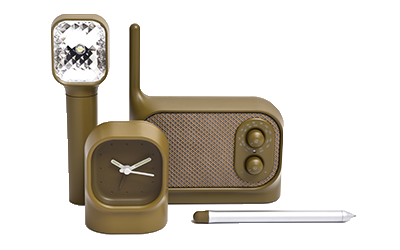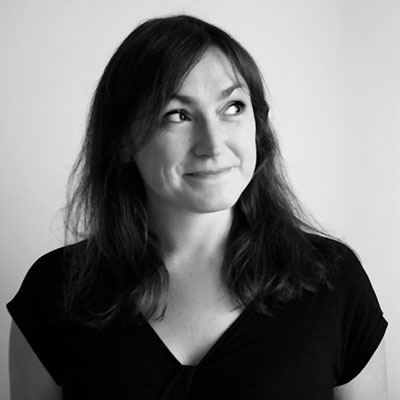
GRACEFUL CURVES
In the space of just a few years Ionna Vautrin has made a name for herself.
Her sensitivity and spontaneity have put a smile on the face of the industry as her sunny disposition and her playful lyricism rub off on her creations.

This young Franco-Spanish designer relies on her sense of touch to help her develop a feeling for an object. She was responsible for redesigning the shoe for the 21st century at Camper. Then she worked alongside the famous George J. Snowden in Milan for Moulinex and Tefal. Following that, Ionna returned to Paris to work for the Parisian publishers Bouroullec.
Her precocious talent won her the prestigious Paris design award Prix de la Création, after which she set up her own design studio. This proved to be a masterstroke, as she was responsible for the Binic table lamp which has become a bestseller and a cult object to boot.

Curves are central to your creations. Would you say they are your trademark?
Ionna Vautrin: It’s something that has developed over time. When I design objects, I always balance lines with organic shapes. Sometimes I try a more radical approach and go for angular shapes… but it’s just not me. It’s important for me to give things a generous and welcoming aspect. My collections all share common genes, you could even say they are like me!
Does beauty play an essential role in an object?
I. V.: I tend to adopt quite a formal approach when designing, similar to that of sculpture. I want to inject empathy into the objects I work on, to create a story around them so that people want to spend time with them because they are part of our daily lives. I want to convey a sense of reassurance. Design is also about taking care of yourself, and others.
How do you find the right balance between an industrial, academic design and your own fondness for mixing genres?
I. V.: I am first and foremost a Breton, and very stubborn! Conflict gives life to my creations. When I designed a lamp for the TGV trains in conjunction with SNCF, the issue around manufacturing and intensive use created real constraints on the project. The way in which you respond to the challenge without compromising on the imaginative and esthetic elements is what brings energy to a project.
Is there something in particular you would like to recast as an artistic object?
I. V.: Things that we usually want to keep hidden: like radiators or boilers for example. The types of objects that haven’t yet been considered as design items.
What have you got lined up next?
I. V.: I’ve got two collaborations lined up for 2020: a capsule collection with Monoprix coming out in September. And I’m also working with Emmaüs on a charity project. I have designed a range of statuettes made from carpentry offcuts.
Photo credits: Ionna Vautrin


